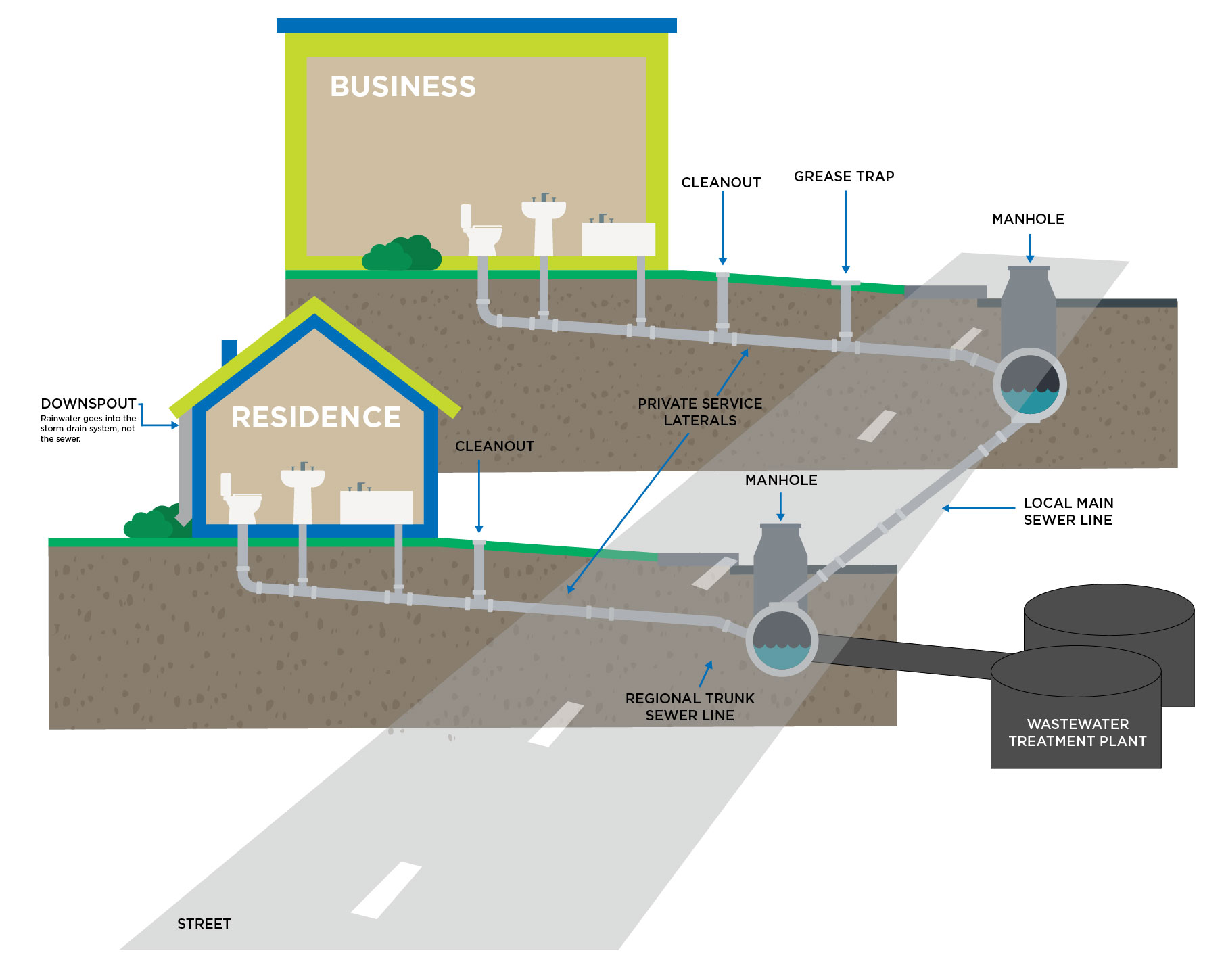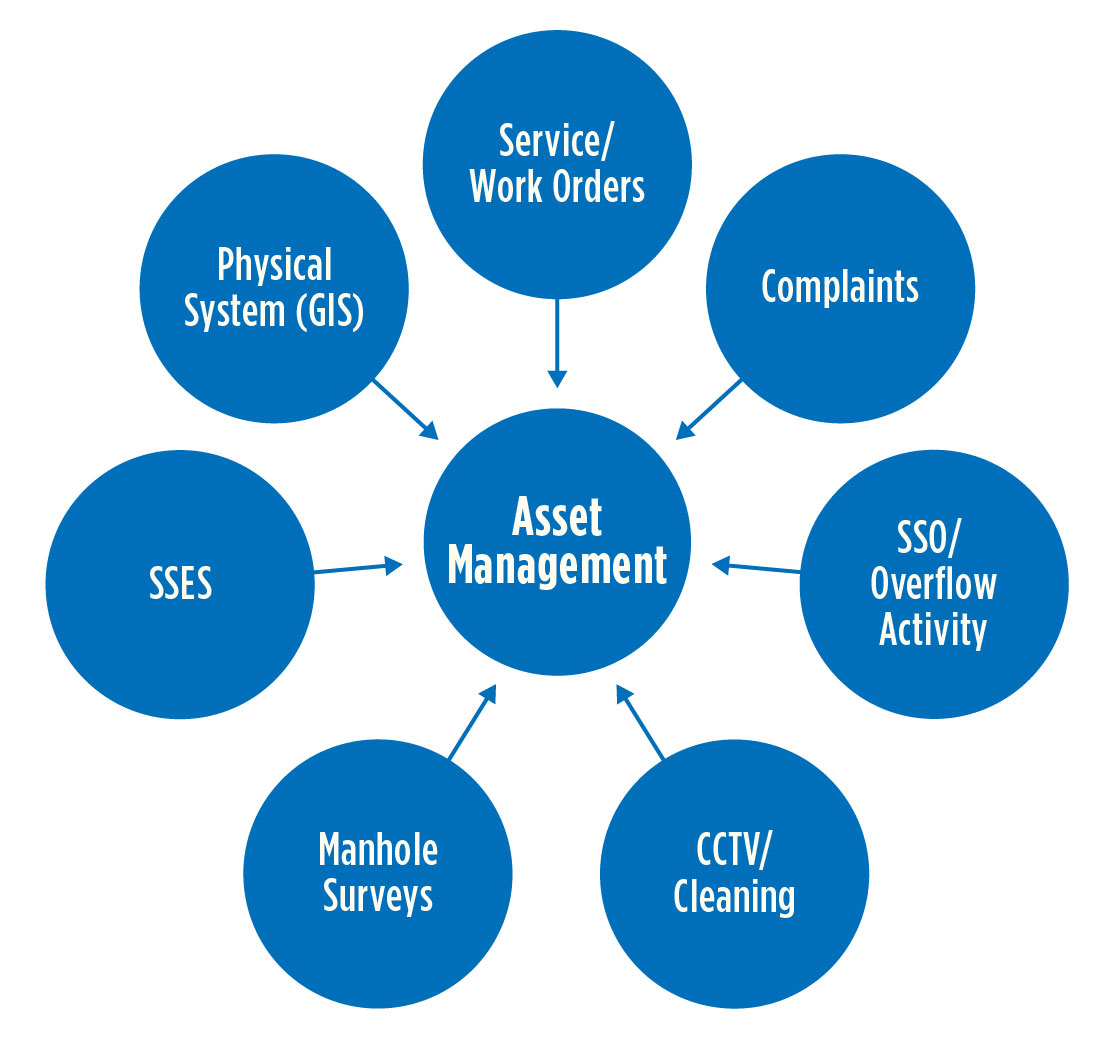This first step of a WWMP can sometimes seem overwhelming to a small community. Historical data, such as sanitary sewer overflow (SSO) activity and customer complaints, usually is recorded in hard copy files rather than digitally. Sanitary sewer evaluation survey (SSES) inspections are completed, but rehabilitation data may not be tracked. Often, a comprehensive database of the physical system is incomplete or has not been kept current, resulting in a lack of confidence in the data that is stored.
As illustrated in Figure 2, development of an asset management strategy involves the integration and understanding of sanitary sewer system data across multiple systems of record. Many times, this requires a digital transformation of historical records. The most critical component of this process is the digital representation of the sanitary sewer system assets (manholes, gravity sewers, lift stations and force mains), and may include a combination of CAD-to-GIS conversion to digitize historical paper maps or GPS survey acquisition of the sanitary sewer collection system.
After the sanitary sewer system is spatially established in the GIS, the remaining record systems — including available work or service request information, SSO inventories, or operation and maintenance (O&M) records — can effectively be linked to the sanitary sewer system assets. Once these systems of record can be effectively understood spatially across the sanitary sewer system, the history of the collection system performance is more easily understood.
Developing an effective asset management strategy and advancing the digital transformation far enough to allow for a thorough understanding of the historical collection system performance is the goal. Reviewing and coordinating with stakeholders about collection system performance provides a uniform vision for WWMP execution and the major initiatives and objectives to be completed.
The second stage of a WWMP process is conducting flow monitoring to understand typical dry weather flow patterns and to evaluate I/I and its impact on the collection system. Inflow is stormwater that is directly connected to the sewer system by drains such as catch basins and sump pumps. Infiltration enters the sewer system through cracks in manholes and gravity mains or through elevated groundwater levels. Flow monitoring allows a project team to assess and quantify amounts of I/I in the system flowing to the treatment plant during wet and dry weather conditions.
Following the monitoring period, an analysis of I/I observed in the system is performed to separate flow meter data into dry weather and wet weather components. Dry weather flow is present in the system under all weather conditions, and includes daily activities such as contributions from showers and dishwashers. These calculations provide the average daily dry weather flow experienced in the system. Wet weather components include I/I and are experienced during and after rain events. Each of these elements is illustrated in Figure 3. This breakdown allows for communities to identify locations in the system that contribute to high levels of I/I.




